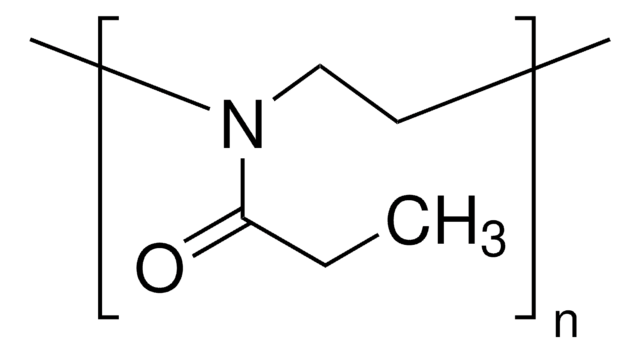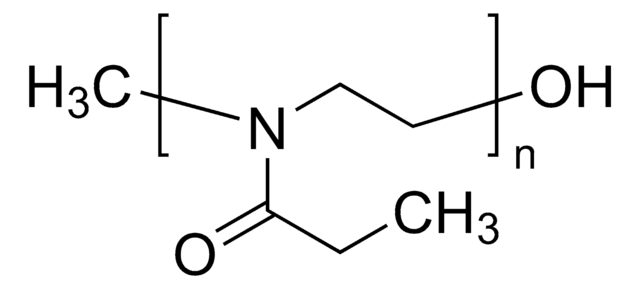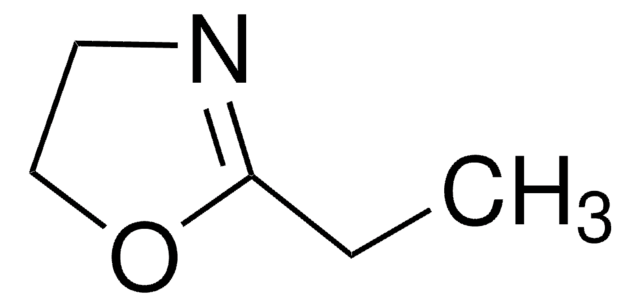741884
Poly(2-ethyl-2-oxazoline)
average Mn 20,000, PDI <1.4
About This Item
Recommended Products
Looking for similar products? Visit Product Comparison Guide
Application
Potential substitute for poly(vinyl alcohol) and poly(vinyl pyrrolidone). Sometimes it is used as an adhesion promoter in coatings. This is also sometimes used in heat sealing and remoistenable hot-melt adhesives. N-propionyl substituted linear polyethylenimine
Features and Benefits
Storage Class Code
11 - Combustible Solids
WGK
WGK 3
Flash Point(F)
Not applicable
Flash Point(C)
Not applicable
Choose from one of the most recent versions:
Already Own This Product?
Find documentation for the products that you have recently purchased in the Document Library.
Customers Also Viewed
Articles
Wide range of functional polymers for biomedical applications have been synthesized and structurally characterized. Several classes of polymers including biodegradable polymers, hydrophilic & amphiphilic polymers, and stimuli responsive polymers have been prepared using controlled and directed functionalization via "living" polymerization such as RAFT, ionic and ring opening polymerization. Selected polymers have been studied for their structure-properties relationship. "
Our team of scientists has experience in all areas of research including Life Science, Material Science, Chemical Synthesis, Chromatography, Analytical and many others.
Contact Technical Service






